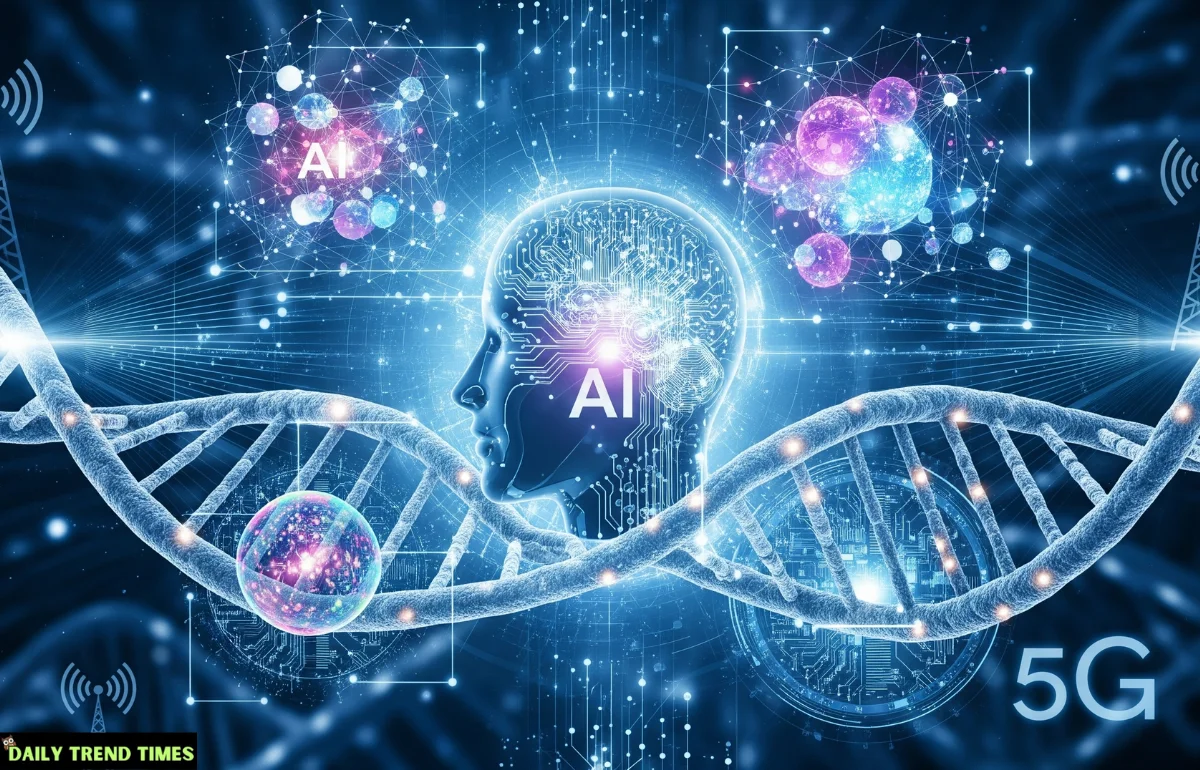Artificial Intelligence and Machine Learning
As we delve deeper into the realms of technology trends for 2025, Artificial Intelligence (AI) and Machine Learning stand out as pivotal game-changers. These cutting-edge technologies are revolutionizing various industries, with AI in Healthcare being a particularly noteworthy application.
AI in Healthcare
- With AI, healthcare is moving toward faster diagnoses and treatment plans designed for each patient’s unique needs.
- Advanced machine learning models process large sets of health records to identify illnesses in their early phases.
- Virtual assistants reduce the burden of administrative duties, giving healthcare staff more time for patient care.
Advancements in Deep Learning
- Deep Learning, a subset of AI, is driving significant advancements in image and speech recognition.
- Neural networks mimic the human brain’s ability to learn and adapt, enhancing the accuracy of AI models.
- Deep Learning algorithms are being increasingly employed in autonomous vehicles and robotics, paving the way for safer and more efficient technologies.
Quantum Computing
Continuing the exploration of the top technologies for the future, Quantum Computing emerges as a groundbreaking field poised to revolutionize computing and problem-solving capabilities.
Quantum Supremacy
- Quantum supremacy is the stage where quantum computers can solve particular problems faster than traditional computers.
- Achieving Quantum Supremacy unlocks the potential for solving complex problems at an unprecedented speed and scale.
- Quantum Supremacy heralds a new era of innovation across industries such as finance, logistics, and materials science.
Quantum Algorithms and Applications
- Quantum algorithms leverage quantum phenomena to perform calculations that are infeasible for classical computers.
- Applications of Quantum Computing span cryptography, optimization, and drug discovery, accelerating breakthroughs in various domains.
- Quantum Computing’s potential to revolutionize data encryption and optimization algorithms positions it as a transformative force in the technological landscape.
Biotechnology and Genetic Engineering
Moving forward in our exploration of transformative technologies, Biotechnology and Genetic Engineering emerge as key players shaping the future of various industries, from agriculture to healthcare.
CRISPR Technology
- CRISPR-Cas9 revolutionizes gene editing, offering precise and efficient modifications to DNA.
- Applications of CRISPR extend to agriculture, medicine, and biotechnology, enabling targeted genetic alterations.
- CRISPR technology holds immense potential for treating genetic disorders and developing genetically modified organisms for sustainable agriculture.
Bioinformatics and Personalized Medicine
- Bioinformatics is the interdisciplinary field that merges biology, computer science, and data analysis to interpret complex biological information.
- Personalized medicine uses genetic insights to create treatments that suit each patient, improving effectiveness and reducing potential side effects.
- The integration of bioinformatics and genetic engineering paves the way for personalized healthcare solutions and innovative medical interventions.
5G Technology and Connectivity
Transitioning to the realm of connectivity and networking, 5G Technology emerges as a transformative force reshaping the digital landscape and driving innovation across various sectors.
Impact on Industry 4.0
- 5G’s high-speed, low-latency connectivity is revolutionizing manufacturing processes in Industry 4.0.
- IoT devices in smart factories leverage 5G to enable real-time data analytics and seamless automation.
- Enhanced communication and connectivity through 5G facilitate the integration of AI and robotics, optimizing production efficiency.
Consumer Adoption and Network Evolution
- Consumers benefit from faster download speeds, improved streaming quality, and enhanced mobile experiences with 5G adoption.
- Network Evolution with 5G involves the deployment of small cells and mmWave technology to expand coverage and increase data capacity.
- The evolution towards 6G technology promises even faster speeds and innovative applications, continuing the trajectory of connectivity advancement.
Robotics and Automation
Exploring the frontier of robotics and automation unveils a world where human-machine collaboration and autonomous systems shape the future of various industries.
Collaborative Robots (Cobots)
- Collaborative Robots, or Cobots, work alongside humans in shared workspaces, enhancing efficiency and safety.
- These robots are designed to assist with repetitive tasks, allowing humans to focus on more complex and value-added activities.
- Cobots are being increasingly integrated into manufacturing, healthcare, and logistics sectors, leading to improved productivity and workplace ergonomics.
Autonomous Vehicles and Drones
- Autonomous Vehicles are revolutionizing transportation with self-driving cars, trucks, and drones.
- These vehicles leverage AI and sensor technologies to navigate without human intervention, offering potential benefits in terms of safety and efficiency.
- From delivery drones to self-driving taxis, the integration of autonomous systems in urban mobility is reshaping transportation paradigms and urban planning.
Conclusion
As we reflect on the remarkable technological advancements shaping the present and future, it is evident that innovation is the cornerstone of progress, revolutionizing every aspect of our lives.
Summary of Top Trends in Science and Technology
- AI and Machine Learning are driving efficiency and innovation across industries, particularly in healthcare.
- Quantum Computing is on the horizon, promising to solve previously unsolvable problems and revolutionize computation.
- Biotechnology and Genetic Engineering offer solutions from personalized medicine to sustainable agriculture.
- 5G Technology is revolutionizing connectivity, enabling faster speeds and network evolution.
- Robotics and Automation are transforming industries with collaborative robots and autonomous systems.
Future Implications and Recommendations
- Embracing these technological trends can lead to increased efficiency, productivity, and innovation.
- Continuous learning and adaptation to new technologies are crucial for staying relevant in an ever-evolving digital landscape.
- Collaboration between industry and academia will drive further advancements and ensure the responsible deployment of emerging technologies for the benefit of society.

Hello, I’m Salman Khayam, the creator and voice behind this platform. As someone passionate about offering practical knowledge, I’ve built this blog to provide you with well-crafted content on a wide range of subjects. Whether it’s improving your well-being, staying fit, learning about nutrition, or enhancing your daily lifestyle, I’m here to share expert tips and thoughtful advice to help you grow and thrive in all areas of life.

